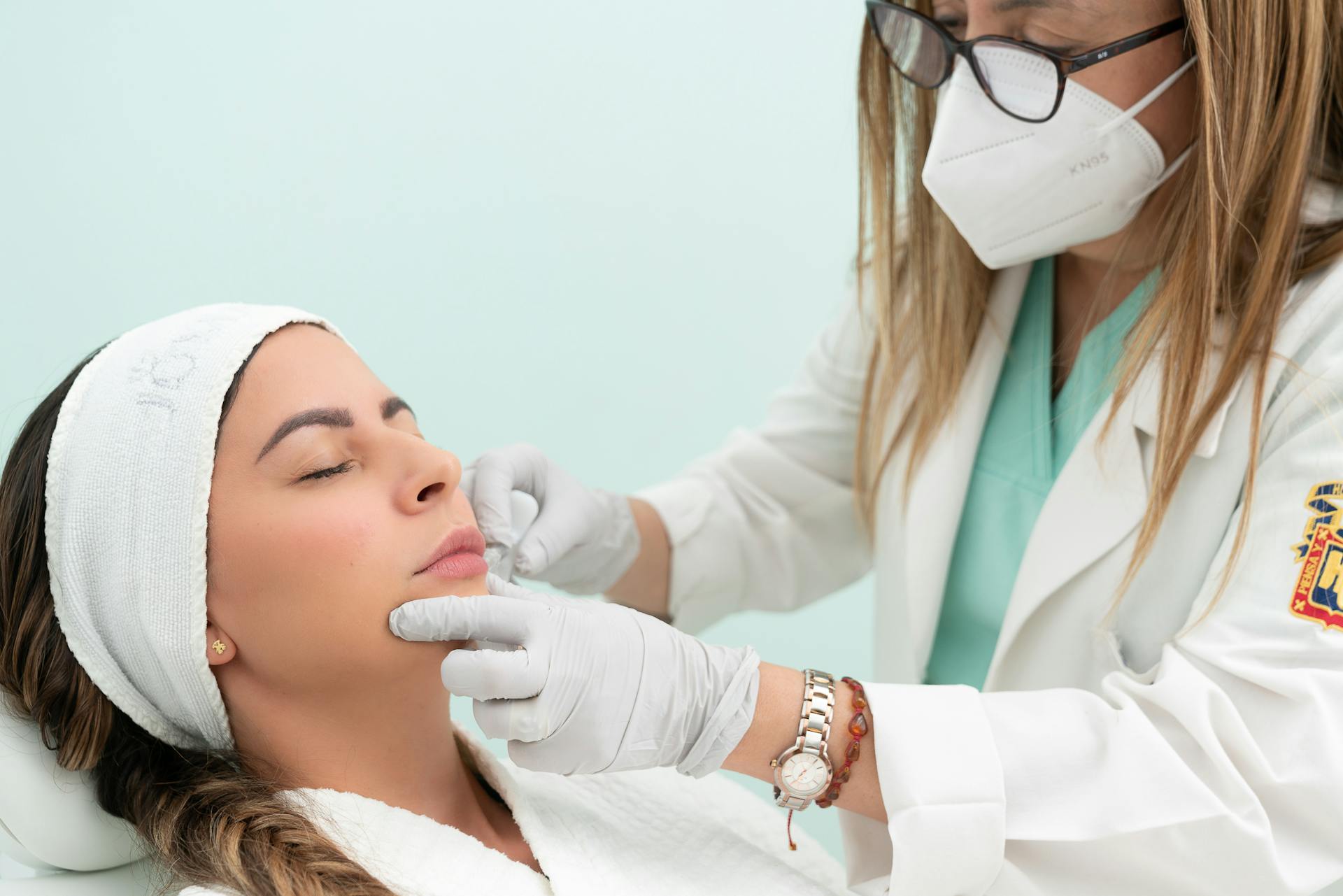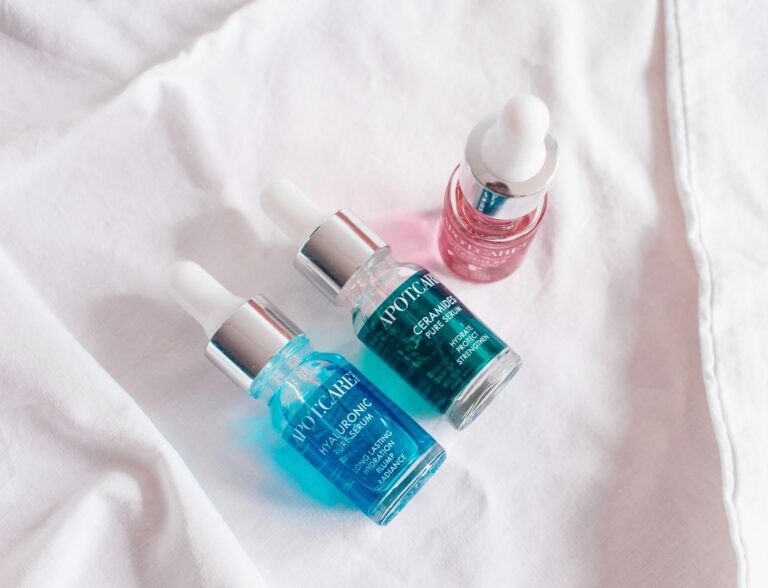
Exploring the world of dermal fillers can indeed feel overwhelming, particularly given the wide variety of options available. This guide aims to walk you through the different types of dermal fillers for natural results in the UK, including hyaluronic acid and calcium hydroxylapatite.
Additionally, it addresses potential risks and side effects while offering tips on selecting a qualified practitioner. Whether you are new to fillers or contemplating a touch-up, this information is designed to provide you with comprehensive support.
What Are the Different Types of Dermal Fillers?

Dermal fillers have become a widely preferred option in the field of aesthetic treatments, providing individuals with multiple avenues to enhance their appearance, rejuvenate their look, and boost skin elasticity.
In the UK, these cosmetic injectables use various materials and techniques tailored to meet specific goals and accommodate different skin types. Hyaluronic acid fillers, for instance, are particularly well-regarded for delivering natural-looking results, while collagen-based fillers focus on enhancing facial volume and contours.
By familiarising yourself with the different types of dermal fillers available, you can make more informed choices during your consultation with registered practitioners.
1. Hyaluronic Acid Fillers
Hyaluronic acid fillers are among the most widely used dermal fillers, known for their ability to provide immediate skin hydration and enhance facial volume while maintaining a natural appearance.
These innovative injectables work by replenishing the naturally occurring substance found in the skin, leading to a plump and youthful look. They are commonly applied in various areas, including lip and cheek fillers, where they help sculpt and enhance facial features.
Patients frequently report that the smooth texture achieved with these fillers contributes to a more radiant complexion, effectively rejuvenating the face. Although the frequency of treatments can vary depending on individual needs and the specific products used, recovery time is typically minimal, allowing individuals to return to their daily activities almost immediately.
Reviews often emphasise the quick yet satisfying results, making these fillers a popular option for those seeking subtle transformations.
2. Calcium Hydroxylapatite Fillers
Calcium hydroxylapatite fillers are recognised for their thicker consistency, making them particularly effective in achieving notable facial volume and reducing wrinkles across various treatment areas.
This distinctive property allows these fillers to provide a more pronounced lift and contour to the face, especially in regions such as the cheeks and jawline. Their biocompatibility ensures that they integrate seamlessly with the body’s tissues, which helps minimise the risk of adverse reactions.
Many patients report enhancements not only in their facial aesthetics but also in skin elasticity, thanks to the stimulating effects these fillers have on collagen production.
While these fillers are generally regarded as safe, it is important to remain informed about potential side effects, which may include swelling or bruising at the injection site. Fortunately, these effects typically resolve quickly, enabling individuals to return to their daily activities with minimal downtime.
3. Poly-L-Lactic Acid Fillers
Poly-L-lactic acid fillers present a distinctive method for facial rejuvenation by stimulating collagen production. This results in gradual improvements that enhance facial contours and restore skin elasticity over time.
These innovative fillers not only assist in volumisation but also play a vital role in balancing facial profiles, allowing practitioners to customise treatments to meet the specific needs of each patient.
The consultation process is crucial, as it provides the practitioner with insight into the patient’s aesthetic goals and helps create a personalised plan that takes into account individual facial anatomy and desired outcomes.
Practitioners with experience stress the significance of a holistic approach, which may involve integrating poly-L-lactic acid fillers with other treatment modalities when appropriate.
Engaging in discussions about maintenance options with patients is essential to ensure that results are sustained, ultimately promoting long-lasting satisfaction and rejuvenation.
4. Polymethylmethacrylate Fillers
Polymethylmethacrylate (PMMA) fillers are recognised as permanent fillers that deliver long-lasting results, making them a compelling choice for those seeking enduring enhancements to their facial appearance.
These fillers can significantly improve facial harmony and restore lost volume, allowing individuals to achieve a more youthful and balanced look. However, it is important to acknowledge that while PMMA provides notable benefits, it also comes with certain risks, such as potential allergic reactions and complications if not administered correctly.
Therefore, it is essential to engage in thorough consultation with licensed practitioners.
Having an open conversation about one’s medical history and aesthetic goals can help individuals make informed decisions, maximising the benefits of the treatment while minimising associated risks.
Which Dermal Filler is Best for Natural Results?

Selecting the most suitable dermal filler for achieving natural results requires thoughtful consideration of your aesthetic goals, individual skin types, and the unique characteristics of the various fillers available in today’s market.
It is important to recognise that not all fillers are the same; their formulations can greatly influence the results you hope to achieve. Additionally, many dermal fillers are reversible, offering a level of flexibility and reassurance for those who may wish to adjust or refine their results.
Engaging in a consultation with a qualified practitioner who specialises in cosmetic injectables can provide valuable insights into which dermal filler may be best suited for you. This ensures that the outcomes will complement your facial symmetry and overall harmony.
1. Consider the Natural Look You Want to Achieve
When considering dermal fillers, it is essential to establish the natural look you wish to achieve. This clarity will inform your choices regarding products and treatment areas.
Having a clear understanding of your personal aesthetic goals not only ensures that the filler enhances your existing features but also contributes to a more harmonious and youthful appearance. You might be envisioning subtle volume in your cheeks to restore lost contour, or perhaps you would like to smooth out fine lines around your mouth without creating an overdone effect.
The beauty of fillers lies in their adaptability. However, it is crucial to work with a skilled professional who understands the nuances of your facial structure and can provide a tailored approach. This customised plan will take into account your preferences while identifying the areas that would benefit most from enhancement, ensuring that you achieve a balanced and natural aesthetic.
2. Research the Different Types of Fillers Available
Researching the various types of dermal fillers available is crucial for making informed decisions about treatment options and ensuring that the products used are FDA-approved.
In today’s dynamic market, individuals may come across reputable brands such as Restylane, Juvederm, and Radiesse, each offering distinct properties tailored to different aesthetic goals.
For example, Restylane provides a versatile range designed to enhance facial contours and address fine lines, while Juvederm is recognised for its smooth application and natural results, particularly when it comes to volumising cheeks and lips. Radiesse is notable for its unique ability to stimulate collagen production, which results in longer-lasting effects.
Understanding the specific benefits and indications of each filler is essential for aligning treatment choices with desired outcomes. This knowledge ensures that patients can achieve their aesthetic vision while prioritising safety and satisfaction.
3. Consult with a Qualified and Experienced Practitioner
Consulting with a qualified and experienced practitioner is an essential step in achieving optimal results from dermal filler treatments. Their expertise can significantly influence the outcomes related to your aesthetic goals.
When searching for the right clinician, it is important to consider their credentials, years of experience, and the specific techniques they utilise. Different practitioners have varying approaches to dermal fillers, which can affect not only the final appearance but also the safety of the procedure.
Prospective patients should also look for reviews and testimonials to gain insight into the experiences of others. These insights can provide valuable information regarding the practitioner’s skill and overall patient satisfaction.
A thorough consultation process is crucial. It should include an in-depth discussion of individual goals and any concerns you may have, ensuring that the treatment is tailored to meet your unique needs.
What Are the Risks and Side Effects of Dermal Fillers?

Understanding the risks and side effects associated with dermal fillers is essential for anyone contemplating these non-surgical aesthetic treatments. Informed decisions can significantly enhance patient satisfaction and safety.
While dermal fillers are typically safe when administered by licensed practitioners, it is important to recognise that potential side effects may include bruising, swelling, and, in rare instances, serious allergic reactions.
Being aware of these risks allows individuals to better prepare for any downtime and recovery time that may be required after the treatment.
1. Bruising and Swelling
Bruising and swelling are common side effects that individuals may experience after receiving dermal filler injections. Typically, these effects resolve within a few days, but proper post-treatment care is crucial for achieving optimal results.
To enhance recovery time and ensure patient comfort, several strategies can be implemented.
- Using ice packs on the treated areas during the first 24 hours can significantly reduce swelling and alleviate discomfort. It is important to apply these packs gently for short intervals and to avoid direct contact with the skin to prevent frostbite.
Additionally, following specific aftercare instructions—such as avoiding strenuous activities and minimising sun exposure—can further assist in the healing process. Staying hydrated and adhering to any prescribed medications will also promote a smoother recovery, maximising the benefits of the treatment.
2. Infection
Infection is a potential risk associated with dermal fillers, which highlights the importance of selecting licensed practitioners and following safety protocols throughout the treatment process.
To minimise the chances of complications, individuals should conduct thorough research on a practitioner’s credentials, confirming that they have the necessary certifications and experience. It is essential to ensure that the treatment environment adheres to strict hygiene standards, as this significantly contributes to infection prevention. Additionally, following pre-treatment care guidelines—such as avoiding certain medications and alcohol—can further reduce risks.
Similarly, it is important to adhere closely to post-treatment instructions. Keeping the area clean and attending follow-up appointments are vital steps in ensuring optimal healing and achieving the best results.
3. Allergic Reaction
An allergic reaction, while uncommon, is a serious side effect associated with dermal fillers. This underscores the importance of conducting thorough consultations to identify any contraindications prior to treatment.
It is essential to recognise the symptoms of allergic reactions, which can vary from mild redness and swelling to more severe responses, such as difficulty breathing. Understanding these symptoms is vital for ensuring safety during cosmetic procedures.
Consequently, engaging in a detailed discussion about medical history with healthcare practitioners is crucial. This dialogue enables practitioners to assess any past allergies or sensitivities a patient may have experienced.
When practitioners are well-informed about a patient’s background, they can make more informed decisions regarding the use of dermal fillers. Ultimately, this approach prioritises patient safety and enhances the overall experience during aesthetic treatments.
4. Nerve Damage
Nerve damage, although quite rare, is a potential risk associated with improper injection of dermal fillers. This highlights the importance of seeking skilled practitioners and utilising precise injection techniques.
To minimise this risk, individuals considering cosmetic enhancements should prioritise safety and seek experienced professionals who have a strong understanding of anatomy and injection protocols.
Proper technique and depth of injection are crucial in reducing complications such as bruising, swelling, and even vascular occlusion. A trained expert is aware of the intricacies involved in facial contours and uses methods that not only aim for optimal results but also protect against adverse effects.
Moreover, the right professional will be familiar with the underlying tissue structures, which allows for accurate placement of fillers and a more natural appearance. This ultimately enhances the overall experience of the treatment.
How to Choose a Qualified Practitioner for Dermal Filler Injections?

Selecting a qualified practitioner for dermal filler injections is crucial for both safety and achieving the desired results. The expertise of the injector plays a significant role in the overall experience and outcome of the procedure.
In the UK, it is important for individuals to seek licensed practitioners who have received specialised training in aesthetic treatments and can offer a thorough assessment tailored to their specific needs.
Additionally, reviewing before and after photos, reading patient reviews, and considering the practitioner’s experience can greatly assist in your decision-making process, helping you find someone who aligns with your aesthetic goals.
1. Look for a Licensed and Certified Practitioner
When searching for a practitioner for dermal filler injections, it is essential to seek out someone who is licensed and certified. This ensures that they adhere to safety protocols and follow best practices in aesthetic treatments.
The importance of verifying a practitioner’s credentials cannot be emphasised enough, as it builds trust in patients regarding the quality of care they can expect to receive.
Aesthetic clinics play a vital role in maintaining high standards by ensuring their practitioners engage in ongoing education. This allows them to stay updated with the latest techniques and trends in the industry.
Such a commitment to continuous learning directly impacts patient satisfaction, as clients can anticipate higher-quality outcomes and safer experiences. By prioritising qualifications and ongoing training, these clinics not only enhance individual results but also contribute to the overall integrity of the aesthetic field.
2. Ask for Before and After Photos
Requesting before and after photographs during your consultation can provide valuable insight into a practitioner’s expertise and the potential outcomes you might expect from dermal filler treatments.
These visual examples serve as an important resource, offering a concrete representation of the practitioner’s skills and artistic vision. By examining the transformations achieved by previous patients, you can gain a deeper understanding of the range of results that have been realised in similar cases.
It is essential to recognise that results can vary significantly based on individual aesthetics and specific goals. Each person possesses unique facial features and desires, which influence not only the techniques employed but also the final effects of the treatment.
Therefore, engaging in open discussions about these nuances can lead to a more personalised experience, ensuring that the chosen approach aligns perfectly with your vision.
3. Read Reviews and Ask for Referrals
Reading patient reviews and seeking referrals can offer valuable insights into the experiences of those who have undergone dermal filler treatments with specific practitioners. Such insights are often critical, as they can shed light on the practitioner’s experience, technique, and overall approach to patient care.
When individuals take the time to provide honest feedback, they contribute to a clearer understanding of what one can expect during the treatment process. This level of transparency can significantly influence the decision-making journey, give the power toing potential patients to make informed choices.
Credible testimonials can greatly enhance trust in the practitioner, as they highlight a track record of successful outcomes and satisfied clients. Ultimately, knowing that others have had positive experiences can instil greater confidence in individuals regarding their own treatment decisions.
4. Consider the Cost and Location
When selecting a practitioner for dermal filler injections, it is important to consider both the cost of dermal fillers and location of aesthetic clinics. These factors can significantly affect your access to treatment and your overall satisfaction with the experience.
Striking a balance between pricing and the quality of service is essential, as well as the expertise of the professionals involved. Many individuals often grapple with the decision between more affordable options and the peace of mind that comes with safety and effectiveness.
Opting for consultations can be a prudent approach, allowing potential clients to explore treatment options that fit within their budget while still prioritising high-quality care.
Prospective patients should feel free to inquire about the qualifications of the injector, the materials used, and any necessary aftercare. Ultimately, making informed choices will lead to a more enjoyable and confident experience with any aesthetic procedure.
Frequently Asked Questions
What are the best dermal fillers for natural results in the UK?
The best dermal fillers for natural results in the UK include products such as Juvederm, Restylane, and Belotero. These fillers are made from hyaluronic acid, a substance naturally found in the body, and are known for producing subtle and natural-looking results.
Are dermal fillers safe for use in the UK?
Yes, dermal fillers are considered safe for use in the UK as long as they are administered by a qualified and experienced medical professional. It is important to do your research and choose a reputable clinic to ensure your safety and satisfaction with the results.
How long do dermal fillers last for natural results in the UK?
The duration of results for dermal fillers can vary depending on the specific product used and individual factors such as metabolism and lifestyle. Generally, results from fillers can last anywhere from 6 months to 1 year, but touch-up treatments may be needed to maintain the desired look.
What can I expect during and after a dermal filler treatment?
During a dermal filler treatment, the chosen product will be injected into the targeted area using a fine needle or cannula. Some discomfort or minor bruising may occur, but this is temporary and can be managed with ice and over-the-counter pain medication. After the treatment, you may experience mild swelling and redness, but this should subside within a few days.
Are there any risks or side effects associated with dermal fillers in the UK?
As with any cosmetic procedure, there are potential risks and side effects associated with dermal fillers. These can include bruising, swelling, infection, and allergic reactions. However, these are rare and can be minimised by choosing a qualified and experienced practitioner.
How do I choose the right clinic for dermal fillers in the UK?
It is important to research and choose a reputable clinic for your dermal filler treatment. Look for clinics that have qualified and experienced practitioners, positive reviews from previous clients, and proper accreditation and licensing. You can also ask for recommendations from friends or family who have had successful dermal filler treatments.






